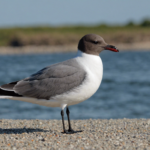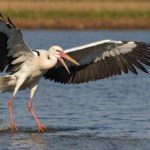The European Green Woodpecker: A Bird with Red, Yellow, and Green Plumage
The European Green Woodpecker, also known as the Picus viridis or Green Woodpecker, is a common bird found in both urban and rural areas. It belongs to the picidae family and is easily recognized by its distinct red, yellow, and green plumage.
Description of the European Green Woodpecker
The European Green Woodpecker is the second largest woodpecker in its range, measuring between 30 to 36 cm in length and weighing around 180 g to 220 g. Its wingspan ranges from 40 to 42 cm. Its body is covered in vibrant yellow and green feathers, allowing it to blend seamlessly with the foliage and go unnoticed by predators.
The head of the European Green Woodpecker is the most colorful part of its plumage. It has a bright red crown, black patches around the eyes, and a white throat. The eyes of this woodpecker are easily recognizable with their white iris. Its legs are either brown or gray and equipped with strong, sharp claws.
The underside of the European Green Woodpecker is grayish-white, with a tinge of yellow towards the rear. The male can be distinguished from the female by the presence of a red moustache band, which the female lacks. Juveniles have darker plumage with speckles and streaks, and their red crown is less prominent.
The Habitat and Behavior of the European Green Woodpecker
The European Green Woodpecker is a sedentary bird that moves only short distances, mainly when it inhabits mountainous regions. It is a solitary bird that forms pairs during the breeding season and sometimes gathers in small family groups. It uses its powerful claws to cling to trees and relies on its camouflaged plumage to hide from predators.
This woodpecker is found throughout Europe, except in Ireland and Spain. It thrives in wooded areas, including parks, gardens, forest edges, orchards, and hedges. It prefers locations with large trees and open spaces.
The Diet of the European Green Woodpecker
The European Green Woodpecker primarily feeds on ants, using its long, pointed, and tactile tongue to retrieve them from anthills. It also digs into the soil, even during winter when it is frozen, to access ant colonies. Additionally, it uses its beak to peck at trees and extract larvae. It consumes worms, small mollusks, and various insects found in tree bark. When its preferred food sources are scarce, it occasionally feeds on fruits and seeds.
Reproduction and Conservation
Breeding season for the European Green Woodpecker begins in January or February. During this time, pairs engage in courtship rituals, with the male providing food offerings to the female. They excavate nesting holes in soft tree trunks between 2 to 10 meters above the ground. The female lays 5 to 7 eggs, which both parents incubate for 15 to 17 days. The nestlings are fed ants and their larvae for 18 to 21 days until they fledge.
The European Green Woodpecker is considered a beneficial bird as it helps control ant populations, and its attacks on fruit trees are minimal. It is a common and non-threatened species within its range.



